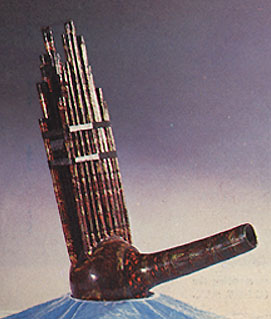

|
Archaeologists have unearthed quite a few sets of instruments used in court performances in Zhou times. Key instruments were stone chimes, bronze drums, stringed lute-like instruments, bamboo flutes, and sets of bells. The instruments found in Marquis Yi's tomb represent the largest single group of musical instruments preserved from any culture in the ancient world.
Music played a central role in court life in ancient China. Visitors to the courts of kings and lords could expect to be entertained by troops of dancers and accompanying musicians. Many of the poems in the classic Book of Songs were odes or hymns meant to be performed on ritual occasions. Music was believed by early thinkers to have great moral powers. Confucius distinguished between music that would bring people into harmony and music that would lead to wanton thoughts. The more quantifiable aspects of music attracted the attention of cosmological theorists who speculated on the significance of pitch measurement and its relationship to other numerical relationships. Sound as a natural phenomenon was perceived to be paradigmatic of many natural processes.
How do the instruments shown below compare with western instruments? |
||||
|
The woodwind instrument below is a mouth organ. The body is eight inches long. There are eighteen bamboo pipes with a vibrating reed inside each pipe. |
The picture below shows one of two panpipes found in the tomb. It is about nine inches long and is made of 13 bamboo pipes. |
|||
 |
|
|||
|
|
|||
|
What do you think these chimes are made of? How can you tell this instrument was intended for visual display as well as musical enjoyment? |
||||
|
||||
|
|
||||
The set of 64 bells found in Marquis Yi's tomb must be considered one of the most astonishing archaeological discoveries in recent times. The picture to the right shows a part of the set. The bells were arranged in eight rows according to size and pitch, and hang in three rows on the L-shaped frame. Can you tell what is supporting the wooden beams? |
||||
|
To see archaeologists working on these bells, click here. The bells bear inscriptions that indicate their pitches and reveal they were gifts from the king of Chu. The precision with which these bells were cast indicates that the art of bell-making had reached a very advanced state. The bells vary in weight from 6.75 to 79.5 kg.
Can you imagine how these bells were played? |
||||
|
||||
|
Move on to Bronzes from Marquis Yi's tomb |
||||